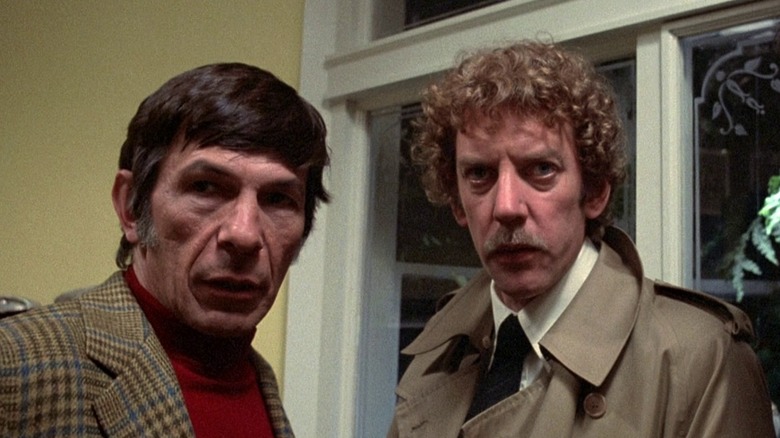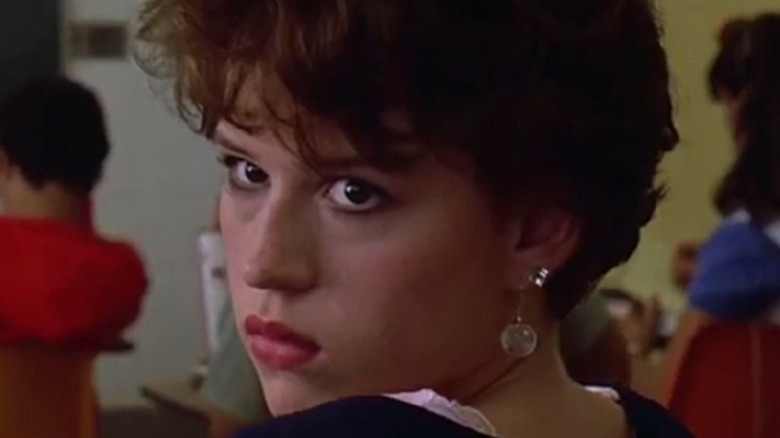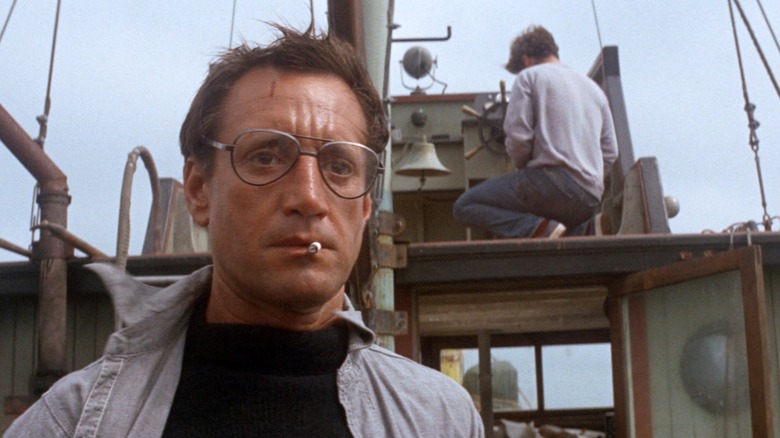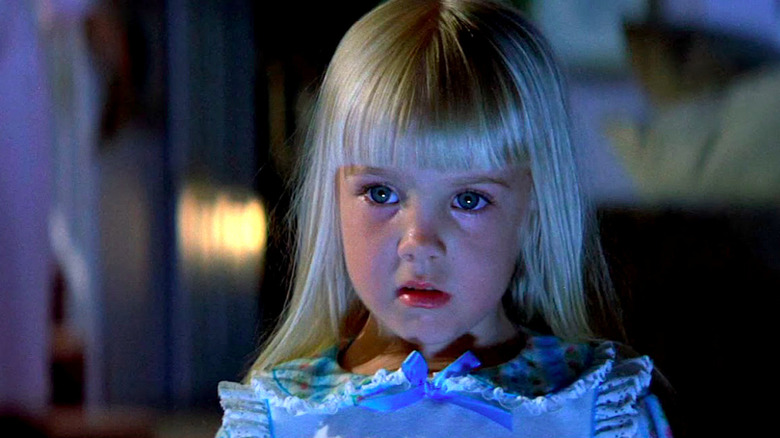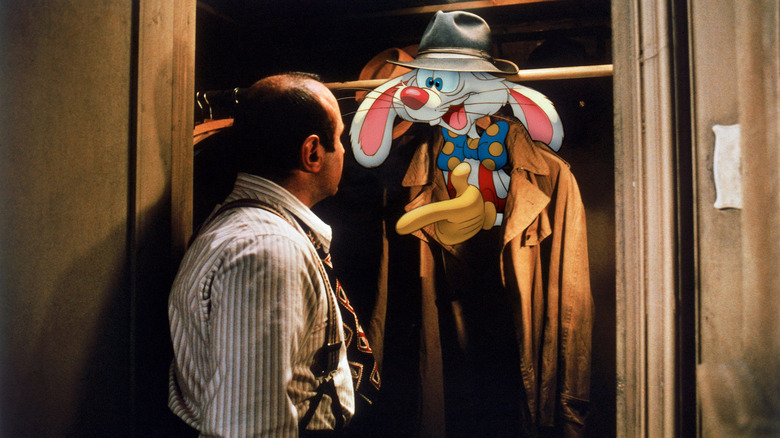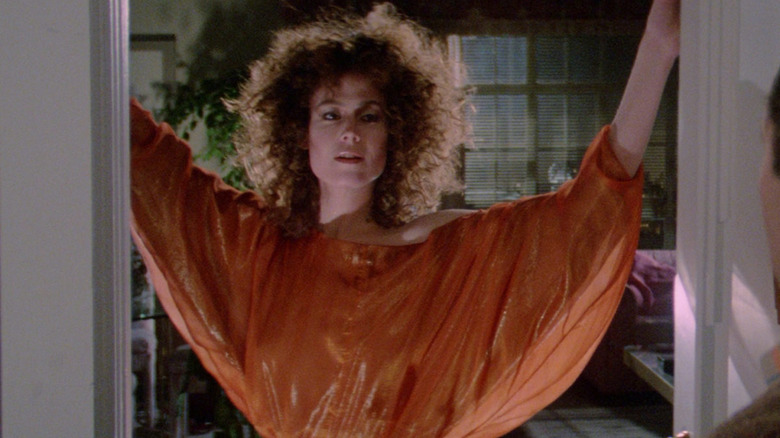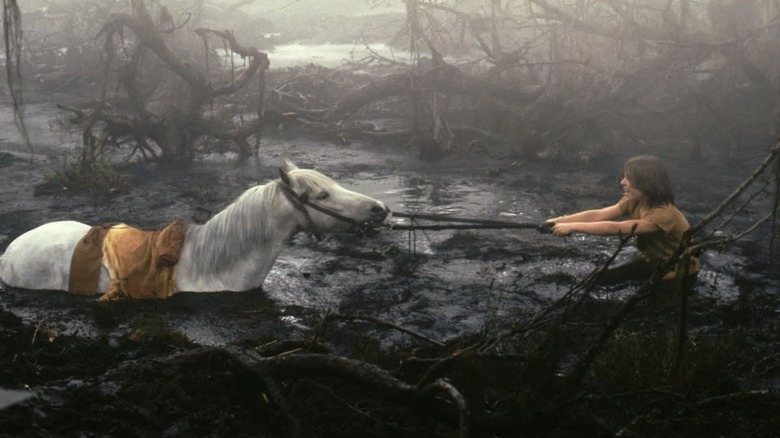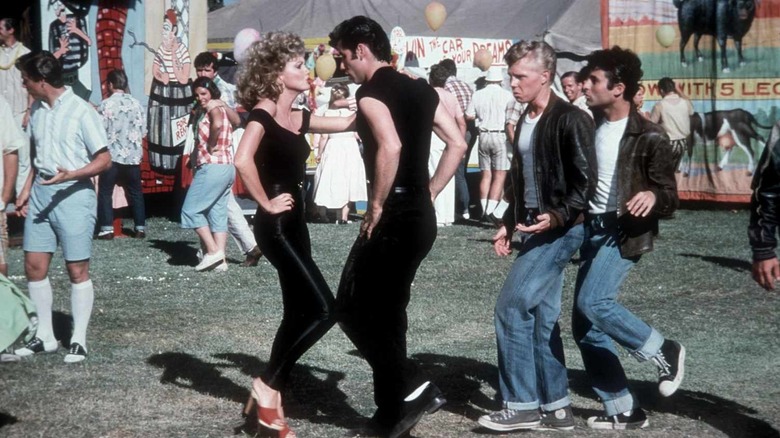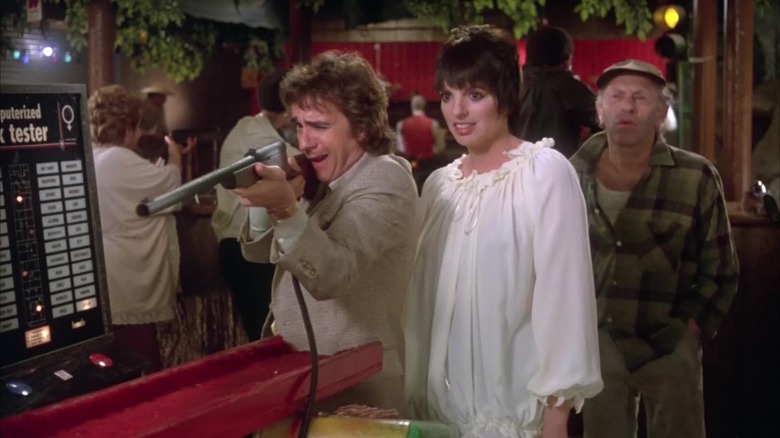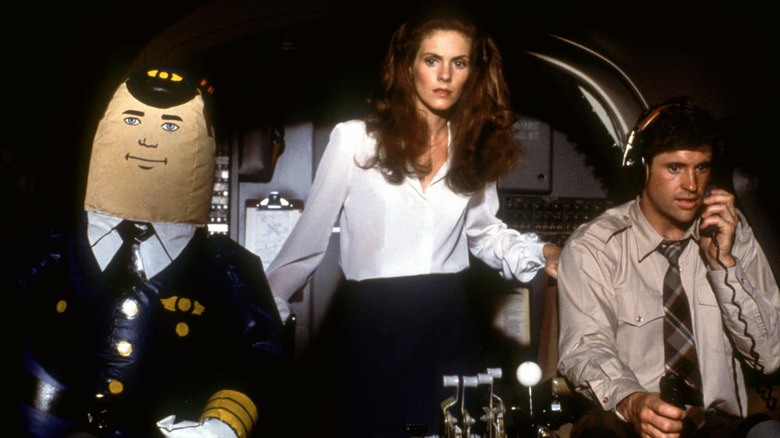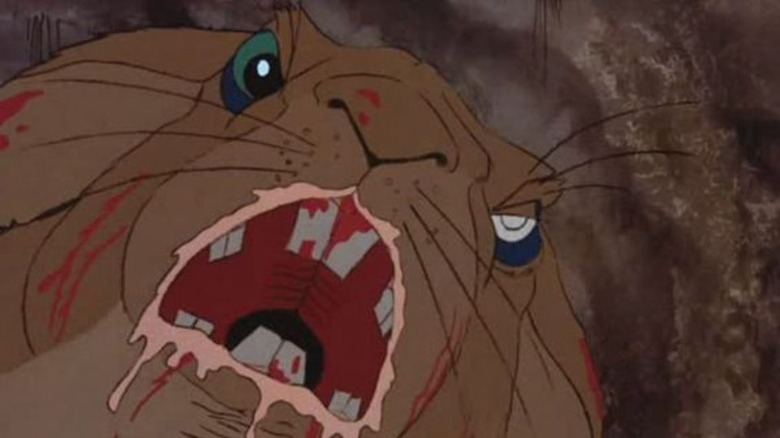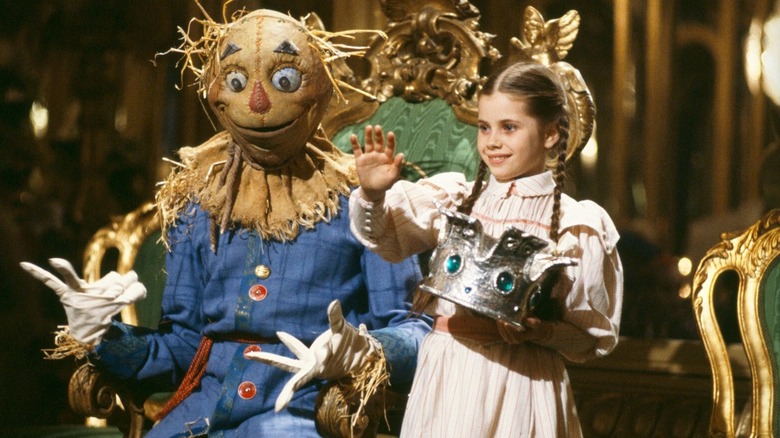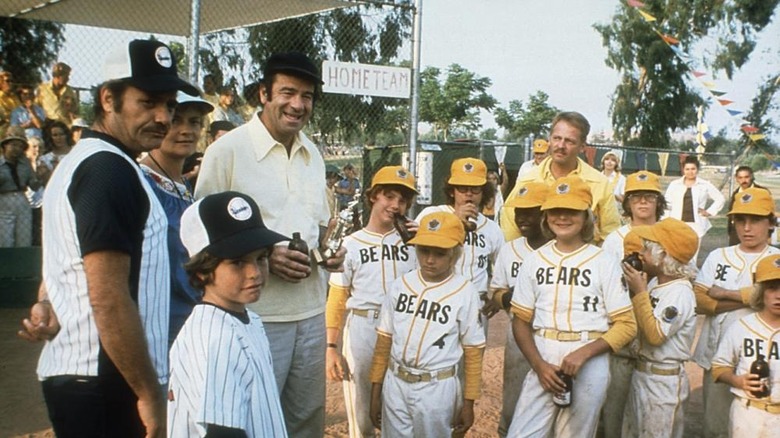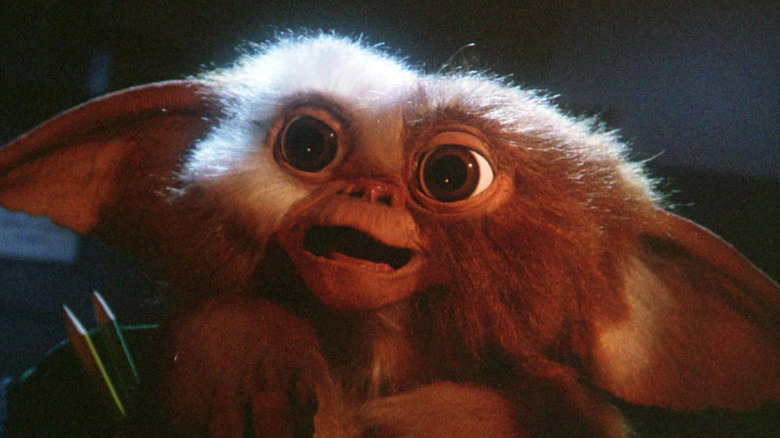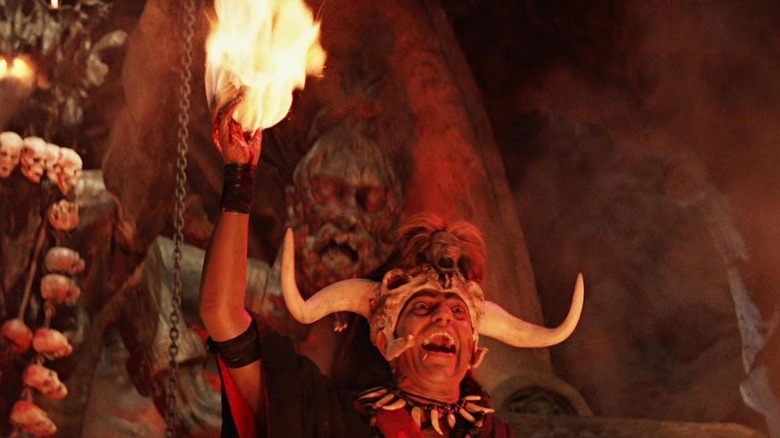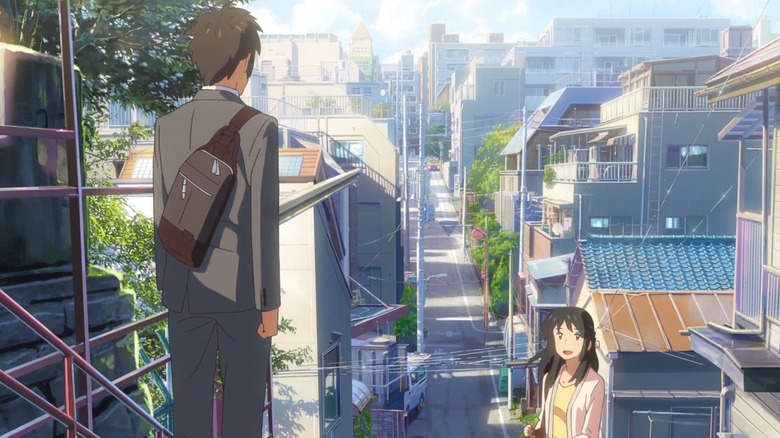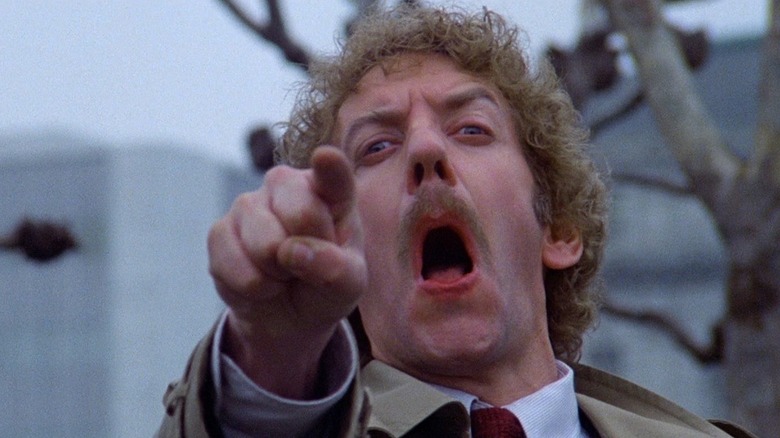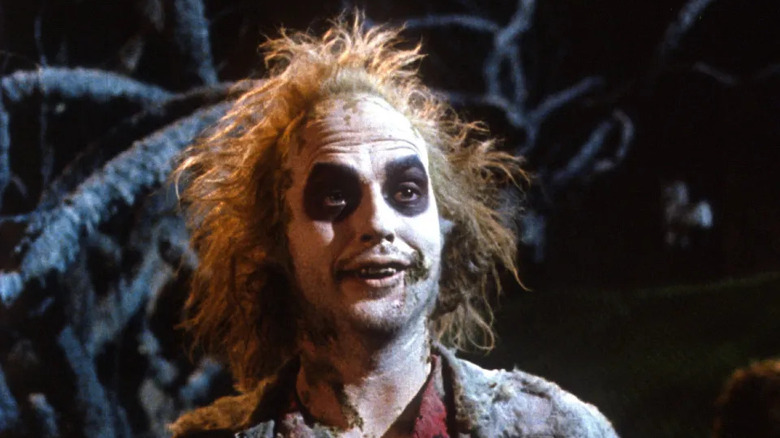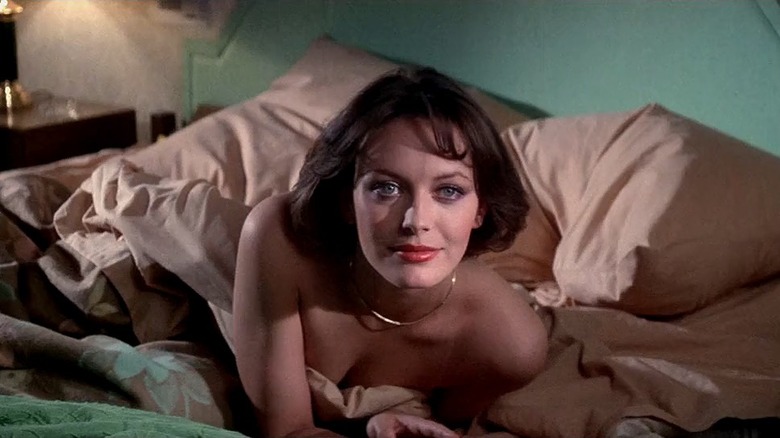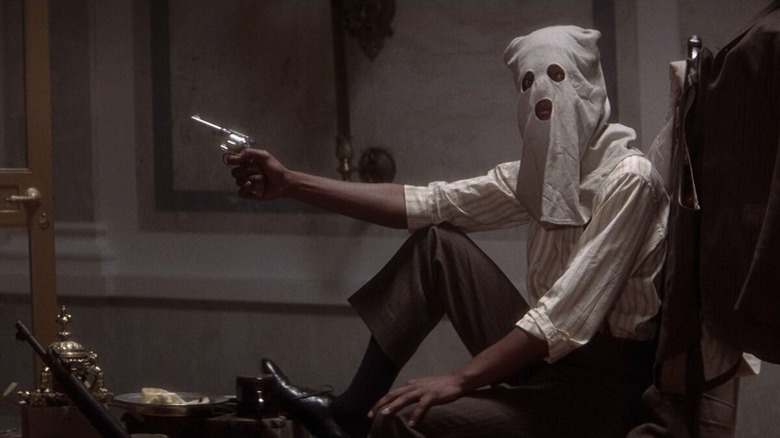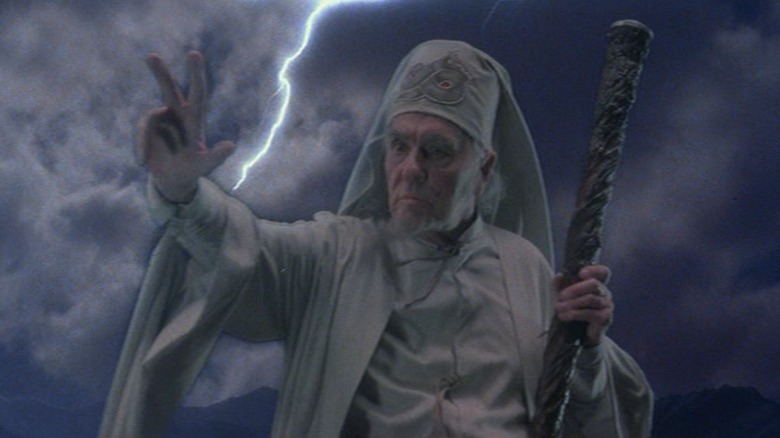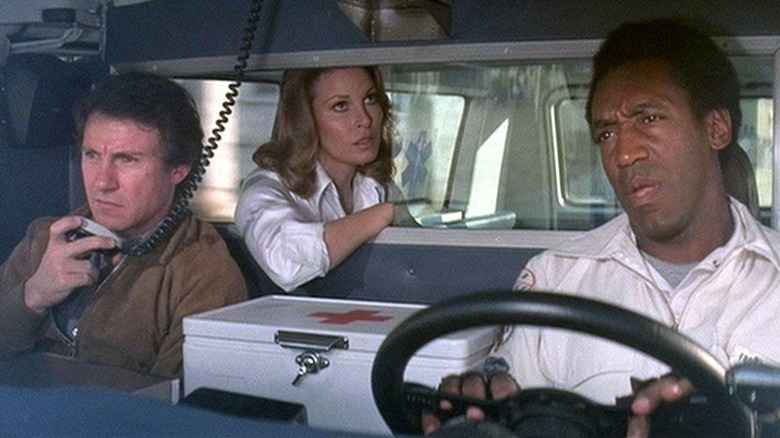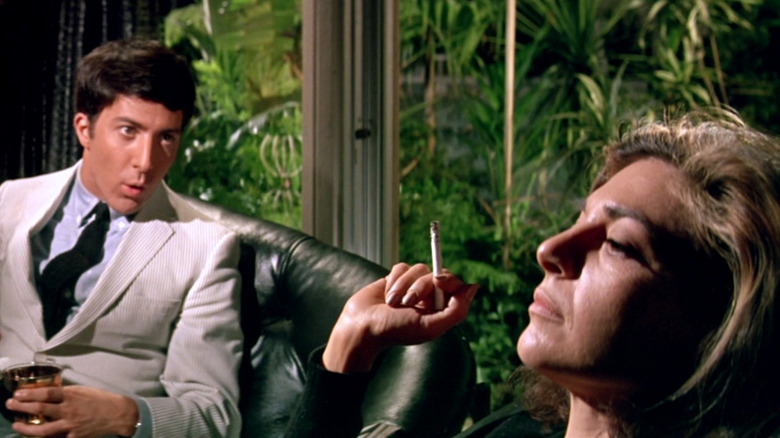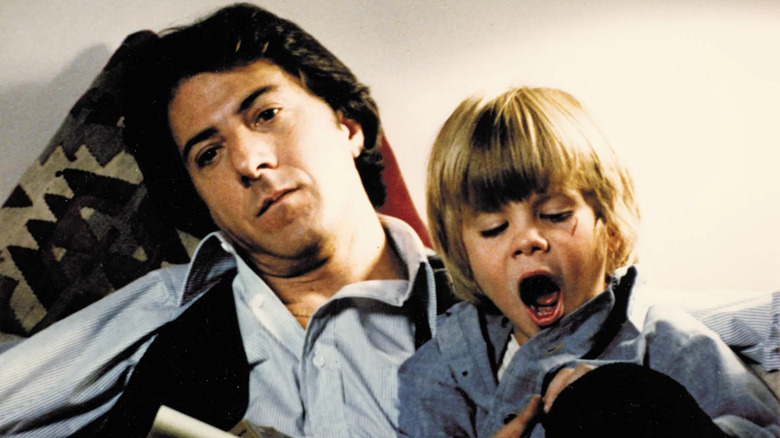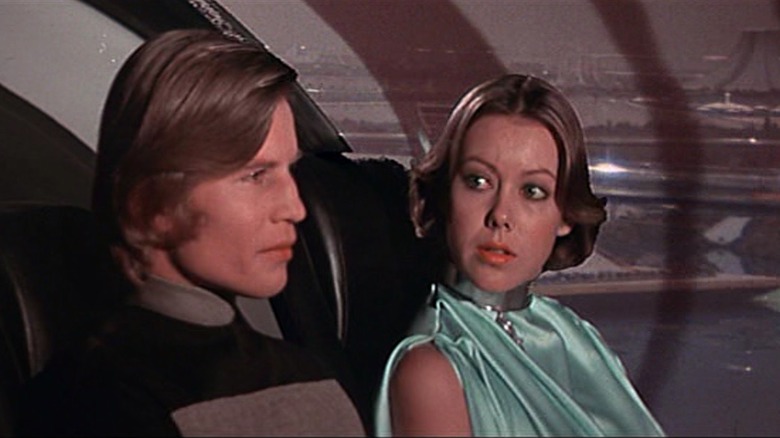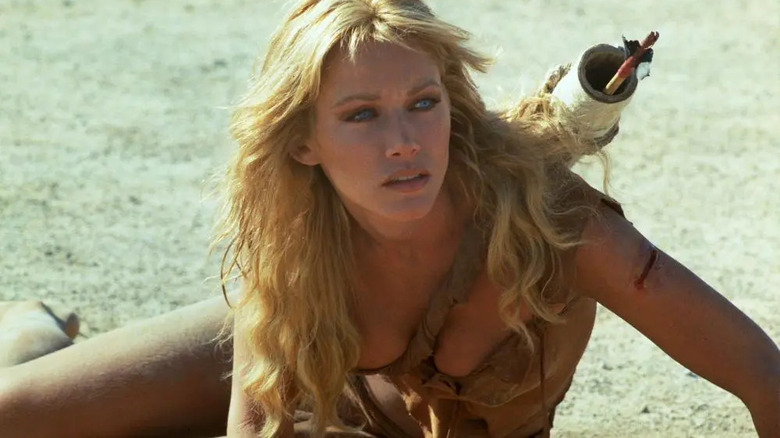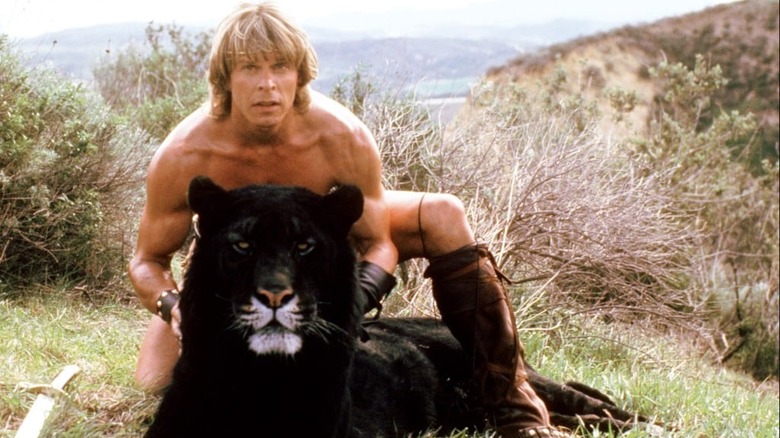The Most Inappropriate PG Movies Of All Time
Remember the good old days when most mainstream movies only had PG and R ratings (with the occasional G or very rare X/NC-17)? At this point, the answer to that is probably not, thanks to the arrival of the PG-13 rating in 1984. The release of two movies that year, "Gremlins" and "Indiana Jones and the Temple of Doom," led to the creation of this new rating. For decades, there was a pretty major gap between "family friendly" and "adults only" when it came to what you could find at the theaters. Nowadays, that's no longer the case, but some movies still slip by the rating board and wind up in the wrong category.
Whether it's because the rating didn't exist yet or the MPAA rating board pulled a fast one, the movies on this list never got the PG-13 rating they likely deserved. From the 1960s to the 2010s, these movies are the raunchiest and most violent movies that ever got a PG rating. We've deemed each of these releases as totally inappropriate for children. Some of them might even offend or gross out the adults in the room as well.
Sixteen Candles (1984)
"Sixteen Candles" is a John Hughes classic, but it doesn't belong anywhere near the PG category. This comedy is chock full of content that is pushing the boundaries for teenagers, let alone the young ones.
In the first half of the movie alone, there's a full closeup of Caroline Mulford's (Haviland Morris) breasts, as well as a side shot of her completely nude. There's also some rather crude language and other racy situations, including a boy betting he can have sex with a girl and asking if he can borrow her underwear. Aside from plentiful depictions and discussions of sex-crazed adolescents, "Sixteen Candles" also contains one of Hollywood's more offensive racist caricatures of the era: exchange student Long Duk Dong.
This wouldn't have moved the needle much either way in the '80s, since the MPAA isn't exactly in the business of cracking down on racism. Still, if it had come out just a few months later, there's no way "Sixteen Candles" would have avoided a PG-13.
Jaws (1975)
Director Steven Spielberg was the one who first suggested the PG-13 rating to the MPAA in 1984, but "Jaws" came out in 1975, nearly a decade before the idea occurred to him. Even for its time, this horror classic looked and felt like an R. The bloody shark attacks leave a trail of gore that's highly inappropriate for kids. Highlights include a girl's hand showing up on the beach missing one finger, a blood-covered leg floating in the ocean, and blood clouds in the water.
There's also a ton of inappropriate language and profanity, as well as some brief nudity and mildly inappropriate sexual humor. Even putting the visuals and inappropriate language aside, there's still the fact that "Jaws" would be scary to any young child, especially in its unbearably tense final act.
Poltergeist (1982)
We'll wait a moment while you pick your jaw up off the floor upon hearing that this horror classic is rated... PG. Yep, "Poltergeist" was rated PG when it was released in 1982 and still has this rating. Kids could have just walked in and seen that! Well, technically they should have a parent guiding them, but who's ever been carded for a PG movie?
Even by today's standards, there's no reason why "Poltergeist" should have earned anything less than an R. All kinds of adult stuff can be found here. On the milder end of the scale is the mundanity of teenage life, such as smoking pot and flipping off anyone who slightly inconveniences you. Then there is the flat-out terrifying — a boy being attacked by a clown doll and a man pulling the flesh right off of his face. Since when was any of this PG?
The fear factor alone of Poltergeist warrants an R rating. Not that we think there's any way you'd consider pulling it out for family movie night, but it bears saying: there's no way your kids should be allowed to watch this.
Who Framed Roger Rabbit (1988)
"Who Framed Roger Rabbit" is a revolutionary feat of melding animation and live action. The Zemeckis classic is an undeniably great movie, but we're not so sure it's appropriate for young audiences.
For starters, there's some questionable language, including quotes like, "The problem is I got a 50-year-old lust and a 3-year-old dinky," and, "Whatta you know, you dumb broad?" There's also Eddie's (Bob Hoskins) alcoholism, as he's frequently shown taking a swig from a bourbon bottle. And does anyone remember a baby smoking a cigar? There's definitely an overlap there of troubling things that wouldn't make it into a PG movie today. There's also a quite disturbing scene depicting Judge Doom (Christopher Lloyd) melting into a puddle.
Then of course there's also the Jessica Rabbit situation. It doesn't take a genius to see why that eye-popping character design might be a tad inappropriate for kids. She is an icon in the pantheon of overly sexualized and inappropriate kids' movie characters.
Ghostbusters (1984)
As far as we're concerned, any scene where Sigourney Weaver is possessed by the spirit Zuul is enough to thrust this one out of the PG realm. The inappropriate jokes, outdated slang, and sexual innuendo oozing out of "Ghostbusters" is enough to make you reconsider showing your kids this childhood favorite. It's still the best of the franchise, but "Ghostbusters" would hit a PG-13 no question if it were released today.
The most sexually inappropriate thing (and there are quite a few) about the first "Ghostbusters" movie is the scene in which Dan Aykroyd's character is shown awakening to find a ghost unzipping his pants — at which point the camera cuts to his face making an expression that's an unmistakable allusion to the ghost making him happy in a very grown-up way. There's also a ton of swearing, alcohol use, smoking, and adult language, like when Dana (Weaver) tells Venkman (Bill Murray), "I want you inside me."
There are also a few scary situations that young audiences may find difficult to watch — you know, as tends to be the case in movies about ghosts.
The Neverending Story (1984)
Look, we all grew up watching "The Neverending Story," but how many of us can say it didn't kinda mess us up? This was many kids' first exposure to dark fantasy, and it got very dark indeed.
"The Neverending Story" is a fairytale about a little kid (Barret Oliver) caught up in the story of another kid on a great adventure. This meta-narrative hook makes it a timelessly engaging movie, but that's not why this is inappropriate for kids. Like "Lord of the Rings" and "Game of Thrones," this story dives deep into death, violence, and heartbreak, and doesn't forget to populate the world with scary monsters and a creepy amorphous force known only as "the Nothing."
However, nothing we've found in Middle-Earth or Westeros is as tragic and scary as the scene in which Atreyu's (Noah Hathaway) beloved horse Artax unexpectedly — and slowly — drowns in the appropriately named Swamp of Sadness. This moment of sadness is sure to impact any kid. Heck, we'll admit this moment still makes us cry even as adults.
Grease (1978)
Nearly 40 years after its original release, "Grease" is still a sleepover staple, and the stage version is probably being performed this weekend at a high school near you. At its heart, it's a simple story about two people who find true love once they get out of their own way and stop listening to their friends' terrible advice. It's also a story about how, in order to get someone to like you, you have to change everything you are. That's not the best message to send to kids.
These questionable themes are reinforced by the doozy of an ending: when a previously chaste teenage girl makes herself over with a leather catsuit and a perm, smokes a cigarette, and calls her boyfriend "stud" before gyrating with him in the "Shake Shack." It's a memorable transformation that any "Grease" fan would call essential, but kid-friendly it is not.
This is to say nothing of many other questionable moments that litter the film: Rizzo's (Stockard Channing) entire character arc is about reconciling a teenage pregnancy scare with wanting to be free with her sexuality, and in "Summer Nights," Danny Zuko's (John Travolta) friends implore him to tell them in explicit detail how "far" he got with Sandy (Olivia Newton-John) at the beach. Even if it doesn't quite warrant an R rating, the PG rating on this one only ages worse by the day.
Arthur (1981)
Just because a movie is given an okay-for-kids rating it doesn't mean that it's actually something they'd actually be interested in seeing. What little kid would want to sit through this 1981 romantic comedy about two spoiled, middle-aged rich people? Maybe it was given the PG rating because producers thought kids would relate to the spoiled children these characters act like.
Some well-meaning parent or confused child might have popped this one in the DVD player a few times, but this "Arthur" has nothing in common with the beloved PBS series based on Marc Brown's books about kid aardvarks besides its name. This "Arthur" concerns an obnoxious alcoholic (Dudley Moore), who's literally falling-down drunk throughout the movie, and his heiress fiancée (Liza Minelli). Sometimes the drunkenness is played for laughs, and sometimes for tears. There's also a scene where Arthur is in bed with a prostitute who talks about how she was molested as a child. This is some stuff that it's better to show your kids after having certain talks.
Airplane! (1980)
It's entirely possible that the jokes fly at such a rapid pace in "Airplane!" that the MPAA rating board simply didn't notice the movie's literal dozens of wildly inappropriate-for-PG moments. Then again, a fairly high percentage of the movie's most memorable bits are at the very least mildly filthy. In fact, the more inappropriate the jokes in "Airplaine!" are, the funnier they get. Well, except for the racist ones, those were never funny.
One of the most overtly sexual jokes is when flight attendant Elaine (Julie Hagerty) blows up the inflatable pilot with a nozzle located at its crotch. Then there is the moment Captain Oveur (Peter Graves) asks a little boy visiting the cockpit if he "likes gladiator movies" and if he's "ever seen a grown man naked." A stressed-out Steve McCroskey (Lloyd Bridges) later mentions that he's picked the wrong week to give up smoking, drinking, sniffing glue, and amphetamines. Upon unpacking the entire script, it's almost as if every line of "Airplane!" has a deeper, seedier meaning. There are R-rated comedies with fewer innuendos than this movie.
Watership Down (1978)
"Watership Down" is an animated movie about cute little bunnies, but it is decidedly not a movie geared toward tiny tots. Based on the novel by Richard Adams, it's about a bunch of rabbits who, attacked by predators, must escape their warren and find a new home while avoiding more attacks by other animals (and humans). "Watership Down" is closer to "Grave of the Fireflies" than any Disney movie in terms of its dour approach to its subject matter, save maybe "Bambi."
While the rabbits aren't massacred in totality, many of them die on the way to freedom in bloody, gory detail: a rabbit caught in a snare coughs up blood, another has its ears torn off, yet another is shot and has a bloody bullet hole in its leg for the rest of the movie. Other rabbits are even hit by a train. That's all just a prelude to the extended bunny blood fiesta that serves as the film's climax, which includes one rabbit tearing the throat out of another rabbit, leaving a pulpy mess with blood pouring out of what used to be its neck.
Return to Oz (1985)
"The Wizard of Oz" is one of the greatest family-friendly classics of all time. It stands to reason that its long-awaited sequel would be just as charming and kid-appropriate, but "Return to Oz" might as well have been a sequel to" Pan's Labyrinth" for how grim it winds up being.
The movie starts when Dorothy (Fairuza Balk) is sent to an insane asylum for what Auntie Em thinks are delusions about the Land of Oz. Her treatment, which includes restraints and electroshock therapy, is shown in detail. This trauma requires Dorothy to travel back to Oz in order to once again escape a life-threatening situation.
Even the good guys in "Return to Oz" are creepy — particularly Jack Pumpkinhead, who resembles Washington Irvine's headless horseman. While there's some scary stuff in the original "Wizard of Oz" (like the Wicked Witch of the West's cackle), the hokiness of old-fashioned, circa-1939 special effects takes away some of the sting. Not so with the much more sophisticated and realistically rendered special effects and puppetry available to filmmakers in 1985.
The Bad News Bears (1976)
Baseball-loving kids might want to check out "The Bad News Bears," a classic Little League comedy from the '70s, but parents should steer their children away from it. It's right there in the name: this is bad news. The basic premise of the movie — a cranky, alcoholic former minor leaguer named Morris Buttermaker (Walter Matthau) grudgingly agrees to coach a Little League team, drinking his way through games — is a little much for young viewers. Coach Buttermaker loves to get a little loaded and drive the kids on his team around, even offering them a beer or two along the way. Matthau's hilarious, and in some ways a great leader for his ragtag team of misfits, but he's no role model, and drinking and driving probably shouldn't be presented to child viewers as a harmless gag.
The main unseemly, not-quite-PG stuff in "The Bad News Bears" is the language. While an utterance or two of the F-word would've led to an "R" rating, the movie carefully skirts the usage of that particular word, opting instead for two dozen or so other cuss words, primarily uttered by the kids, who are also seen smoking and gambling. All of this put together would have earned a PG-13 in a more discerning time.
Gremlins (1984)
How many parents back in '84 took their kids to see the original "Gremlins" assuming it was going to be some kind of live-action "Care Bears"-type thing based on the poster of fuzzy and adorable Gizmo? While they might have been right that the movie existed to sell toys, little did they know that Gizmo was the good Gremlin. They had yet to meet Stripe, the bad one. Very, very bad.
This is another cusper that just dodged the PG-13 rating, largely because most of the violence in it is directed at the Gremlins. In addition to the general kid-terrifying monster mayhem, a Gremlin gets chopped up in the kitchen, a Gremlin gets caught in a blender, and another one is killed in a microwave. For all that, perhaps the most disturbing thing in the movie is Phoebe Cates' character's speech about how Santa isn't real. If this is a movie meant to sell toys to kids, we're not sure why it's filled with crass violence that will make sure parents never let them watch or buy anything with the "Gremlins" name on it again.
Indiana Jones and the Temple of Doom (1984)
The second "Indiana Jones" movie adopts a significantly darker tone than the Saturday serial throwback style of "Raiders of the Lost Ark." Still, "Temple of Doom" garnered a PG rating despite some deeply unsettling set pieces, many of which involve children. Kids are slave workers in a mine, for example, which might not be as big a deal as the eating of monkey brains, or a scene in which the Thuggee high priest Mola Ram (Amrish Puri) rips a man's still-beating heart right out of his chest.
After "Gremlins" and "Temple of Doom" were released, the MPAA created the PG-13 rating. Steven Spielberg, who produced "Gremlins" and directed "Temple of Doom," is most commonly associated with the idea. Before PG-13, the rating system considered all children, from babies up to 17, to essentially be the same audience. A PG-13 rating acknowledged that there was room to protect younger viewers while allowing adolescents access to more mature fare.
Your Name (2016)
The invention of the PG-13 rating has meant that modern PG movies are much tamer than the graphic content of the '70s and '80s. This international anime breakout from "Suzume" director Makoto Shinkai is a body-swapping romance that pushes the boundaries of the rating. While "Your Name" isn't sexually explicit, the gender-swap aspect of this movie is fairly frank about exploring teenage bodies in a way that may better suit more mature viewers.
In "Your Name," high schoolers Taki Tachibana and Mitsuha Miyamizu begin inexplicably switching bodies one day. When Taki wakes up in Mitsuha's body, the film turns his interest in her womanly features into a running gag. Taki takes to playing with her breasts whenever he is swapped with Mitsuha, living out an adolescent fantasy. While the movie never shows these underage characters naked, it's small moments that make "Your Name" inappropriate for a younger audience. For a US audience, this probably should've been rated PG-13.
Invasion of the Body Snatchers (1978)
The 1978 "Invasion of the Body Snatchers" remake is one of the most disturbing PG movies to ever hit cinemas (the 1956 original, though plenty creepy, isn't quite so visually shocking, and pre-dates the MPAA rating system). Moments of blood, gore, and terror punctuate this thriller and will leave even a seasoned adult uneasy as the credits roll.
The premise itself — mysterious organisms from space start killing and replacing people — is nightmare-inducing, but it's the images within that really put "Invasion of the Body Snatchers" over the line. Ever seen a human's face on a dog's body? You never forget that type of thing. There is also the issue of the film's haunting ending. Even if a kid can somehow get through the supernatural and grotesque alien pods unfazed, the psychological impact of the conclusion might keep them up at night.
Beetlejuice (1988)
While this Tim Burton classic is certainly more zany comedy than it is horror, kids of multiple generations have been scared by watching this too early. With scary monsters, comical instances of gore, every swear word you are allowed to put in a PG-rated movie once, and some bawdy gags, "Beetlejuice" has it all.
While it's common to see a PG-13 movie drop the F-bomb once in its run-time, the list of PG-rated movies where characters say "f**k" is a select one. "Beetlejuice" graces this list with not one but two F-words, due to one being slightly inaudible. There is a great deal of profanity in "Beetlejuice," but that's not what will scar a young audience. The body-horror of stretched, distorted, and otherwise transformed characters is a bit extreme by today's standards of PG. If you are going to watch "Beetlejuice," you definitely need a well-developed, pre-existing morbid sense of humor.
The Pink Panther Strikes Again (1976)
While the "Pink Panther" movies are fully in the realm of slapstick, there is a lot of implied and suggested sex in this particular sequel. "The Pink Panther Strikes Again" is the fifth in the original series starring Peter Sellers as the clumsy Inspector Jacques Clouseau. Investigating the kidnapping of a nuclear physicist takes Clouseau around the world and into many suggestive situations.
At one point, Clouseau goes to a nightclub drag performance to investigate the disappearance. This isn't inherently inappropriate, but Clouseau makes some ignorant remarks about the character's gender and presents as outwardly hostile toward Jarvis (Michael Robbins) just because he is in drag.
As he is being chased by assassins, there are seduction attempts made on Clouseau by a Russian operative named Olga. A running joke where two people undressing to have sex get interrupted leads to some mild nudity. Still, nudity in a sexual situation is arguably too inappropriate for such a deceptively silly flick.
Ragtime (1981)
The 1981 movie "Ragtime" is a portrait of racial tensions in early 1900s America. Starring James Cagney and Elizabeth McGovern, the Oscar-nominated film features Howard E. Rollins Jr. as a Ragtime pianist that gets wrapped up in the legal trouble of a wealthy white family. As expected, the movie features a good deal of bigoted racial language. What you wouldn't guess is that the PG-rated film features full-frontal nudity, including a lengthy scene of Elizabeth McGovern walking around a hotel room completely naked. It is pretty egregious for a PG movie, even a handful of years before the PG-13 rating was brought about.
Other potentially shocking content in "Ragtime" includes racial violence carried out by the police. This isn't the most intense depiction of this type of violence in media, but once again, we're dealing with pretty heady topics for a PG movie.
Dragonslayer (1981)
"Dragonslayer" is a dark fantasy romp produced by none other than Disney (the now-megacorp doesn't hold the distribution rights; those belong to co-producers Paramount Pictures). The film starred Peter MacNicol and Caitlin Clarke in a more mature take on swords and dragons than Disney's standard fare, despite its PG rating.
There are some equal-opportunity butt shots in "Dragonslayer," but what gets it a place here is the graphic violence. The deaths in this movie are brutal. People get burned alive and eaten by dragons. In one of the film's most extreme sequences, a virgin sacrifice is made.
We don't quite know what director Matthew Robbins was thinking when the movie lingers on the shot of a dead dragon with its organs spilling out. As cheesy as moments like this can seem out of context, others are shockingly dark. If your kid wants to watch a fantasy adventure in a world with dragons, we would recommend not choosing this one.
Mother, Jugs & Speed (1976)
"Mother, Jugs & Speed" is a movie about having sex, doing drugs, and doing crimes, but it's rated PG. The title alone is pretty racy, and the character names in this 1976 Peter Yates comedy aren't much better: Bill Cosby as "Mother" Tucker, Harvey Keitel as Speed (a moniker earned for his habit of selling drugs to children), and Raquel Welch as Jennifer, aka Jugs, for all the reasons you'd suspect.
The plot revolves around two warring factions of ambulance companies vying for a contract with the city of Los Angeles. It's an absurd premise that is mostly an excuse to introduce as many skeezy characters as can fit in the movie's 98-minute run time.
"Mother, Jugs & Speed" is bananas inappropriate for kids; even by today's standards, we are shocked by its lack of an R rating. While the subject matter is for adults, everything in "Mother, Jugs & Speed" is tame by all the official standards. There is technically no nudity or sex depicted and the violence is not bloody or gory. The only profanity used is the repeated use of racial slurs, which makes it hold up even worse.
The Graduate (1967)
Believe it or not, the Mike Nichols classic that birthed the line "Mrs. Robinson, you're trying to seduce me. Aren't you?" is rated PG. "The Graduate" is a great movie, but it's also one about seduction and sexual coercion. Not only will the themes go way over a younger audience's heads, but many moments in "The Graduate" would be too inappropriate for any PG movie made today.
Focusing on the love triangle between recent college graduate Ben (Dustin Hoffman), Elaine Robinson (Katharine Ross), and her mother (Anne Bancroft), the film is Simon & Garfunkel-scored odyssey. In her most manipulative moments, Mrs. Robinson tries to seduce Ben by getting him drunk. The film also ends on a mature, complex note that will probably go right over most kids' heads.
There is also the fact that most of the characters, namely Mrs. Robinson, spend the majority of the movie smoking cigarettes. These days, smoking is certainly one thing that will get a PG movie bumped to PG-13.
Kramer vs. Kramer (1979)
Sometimes the line between flat-out inappropriate and not great for children is a fairly thin one, but still one worth distinguishing. In the case of the Oscar-winning legal drama "Kramer vs. Kramer," there is nothing content-wise (gore, violence, sex, etc.) that warrants a rating above PG. However, anyone who has seen the movie knows the subject matter involves emotional abuse and bad things happening to children.
In this divorce drama, Dustin Hoffman and Meryl Streep try to keep a united front for their son as their marriage crumbles. Although there is technically a scene where we see a naked Meryl Streep, it's the scene where their child takes a bloody tumble off a jungle gym that earns it a spot here. Other minor forms of domestic abuse, such as yelling and breaking objects to intimidate someone, make "Kramer vs. Kramer" extremely tense for a movie with a PG rating.
Logan's Run (1976)
This sci-fi flick from 1976 is a certified cult classic. Based on a dystopian novel, "Logan's Run" is certainly mature in its themes. That's fine for a PG-rated movie. What's not so fine is the casual orgy scene, which puts this flick squarely on the "do not, under any circumstances, show to kids" list.
"Logan's Run" takes place in an isolated city of the future where everyone dies at the age of 30. The scene in question happens after Logan (Michael York) and Jessica (Jenny Agutter) are on the titular run, breaking free. At one point, our two heroic lovers run through an establishment called the "Love Shop," where you can briefly see numerous men and women having sex.
Even without this one short sequence, "Logan's Run" is still inappropriate for kids. While many aspects of the society depicted in the film are progressive about sex, let us consider the fact that Logan only meets Jessica after queuing her up on his futuristic sex partner teleportation device. Within two minutes of meeting her, Logan says, "You're beautiful, let's have sex." It's not exactly behavior you want kids modeling.
Sheena: Queen of the Jungle (1984)
This one is based on a comic book character, so how bad can it be? You'll find the answer in the 1984 adaptation of "Sheena: Queen of the Jungle," otherwise just called "Sheena." The most memorable part, at least to young boys in the 1980s, was the amount of Tanya Roberts — playing Sheena — you got to see.
The "Jungle Queen" not only puts its namesake in a risqué, body-hugging outfit common to comic book heroines but also shows her bathing completely naked. One scene that shows Sheena's bare breasts even hints at a sexual encounter.
It would also be impossible to mention this movie without discussion of its depictions of colonial violence. The on-screen genocide and execution of entire African villages is a bigger black mark against this movie than a lady running around semi-clothed.
The Beastmaster (1982)
This 1980s sword and board flick became a VHS cult classic, perhaps due to kids being able to rent it and see a great deal of mature content: nudity, dismemberment, general gore, etc. "The Beastmaster" would be sure to land near the top of this list if it were ranked. Take, for starters, the fact that most of the women in this movie are naked at one point or another.
In addition to naked concubines and topless women everywhere, some of the scary ideas in this PG movie go above and beyond. There is a creature that eats gouged-out eyes and human fingers. In the one truly provocative moment from "The Beastmaster," a child is burned alive. This nearly culminates in another child's death, but the movie decides to finally show some restraint for once in its darkest moment.
